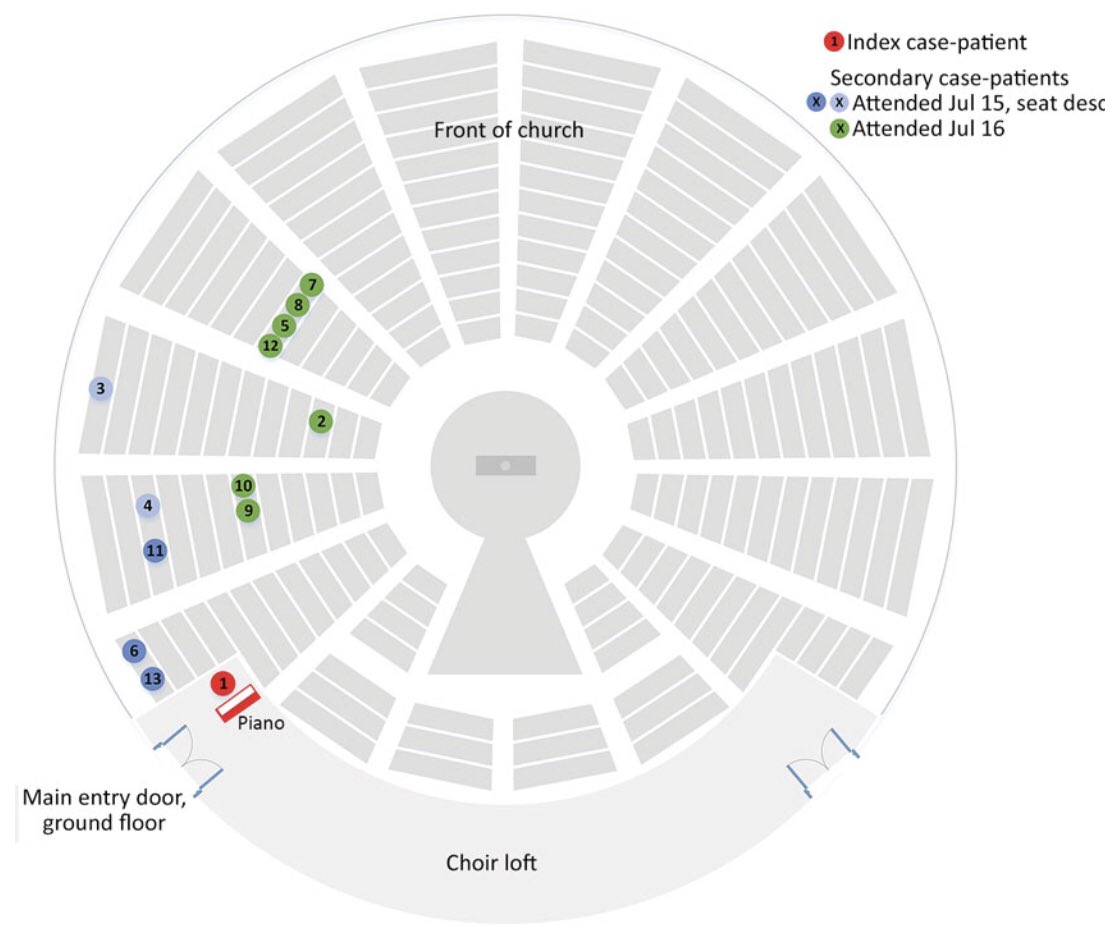
1/9 - “On July 18, 2020, the Western Sydney Public Health Unit was notified of a positive #SARSCoV2 test result for an 18-year-old man. He reported symptom onset of malaise and headache on July 16 and cough and fever on July 17. He was a church chorist.”
wwwnc.cdc.gov/eid/article/27…
wwwnc.cdc.gov/eid/article/27…

2/9 - “The case-patient had sung from a choir loft, elevated 3.5 m above the congregation, which he entered before and left after the service. He denied touching objects in the church or mixing with the congregation. Video recordings of the services corroborated this history.”
3/9 - “On July 19, the church informed the community about the case-patient, prompting testing among members. On July 20, 2 additional case-patients who reported attendance on July 15 and 16 [were notified]. Neither was known by the primary case-patient.”
4/9 - “We detected 12 secondary case-patients among 508 service attendees, yielding an overall secondary attack rate (SAR) of 2.4% across the 4 services. [...] There were no deaths, although 3 case-patients were hospitalized, including 2 who required intensive care.”
5/9 -“Secondary case-patients showed development of symptoms 2–12 days after exposure. 5 of the secondary case-patients were from the same households as earlier cluster case-patients. Thus, these case-patients might have been infected within the household rather than the church.”
6/9 - “#SARSCoV2 genome sequencing was performed for the primary case-patient and 10 secondary case-patients (6). These case-patients formed a single genomic cluster with a maximum of 2 nt changes from the #SARSCoV2 genome of the primary case-patient.”
7/9 - “To further characterize exposures, we determined the seating positions of secondary case-patients within the church. We asked case-patients to describe where they sat, and the video recordings of the services were reviewed, jointly with the case-patients where possible.” 

8/9 - “The church had a high conical roof, and the ventilation system at the apex was not in operation during the services. The doors and windows were largely closed, except as persons entered and exited, and the wall fans were off, meaning there was minimal ventilation.”
9/9 - “Transmission during this outbreak is best explained by airborne spread [3 arguments]:
1. Singing generates more respiratory aerosol particles and droplets than talking;
2. Minimal ventilation;
3. The primary case-patient near its peak of infectiousness (low Ct values).”
1. Singing generates more respiratory aerosol particles and droplets than talking;
2. Minimal ventilation;
3. The primary case-patient near its peak of infectiousness (low Ct values).”
• • •
Missing some Tweet in this thread? You can try to
force a refresh


















